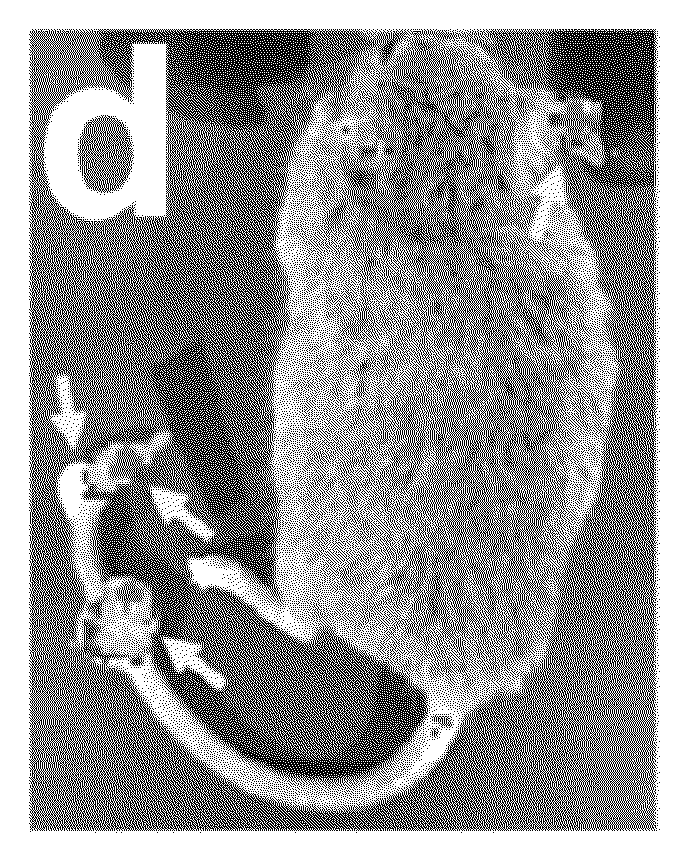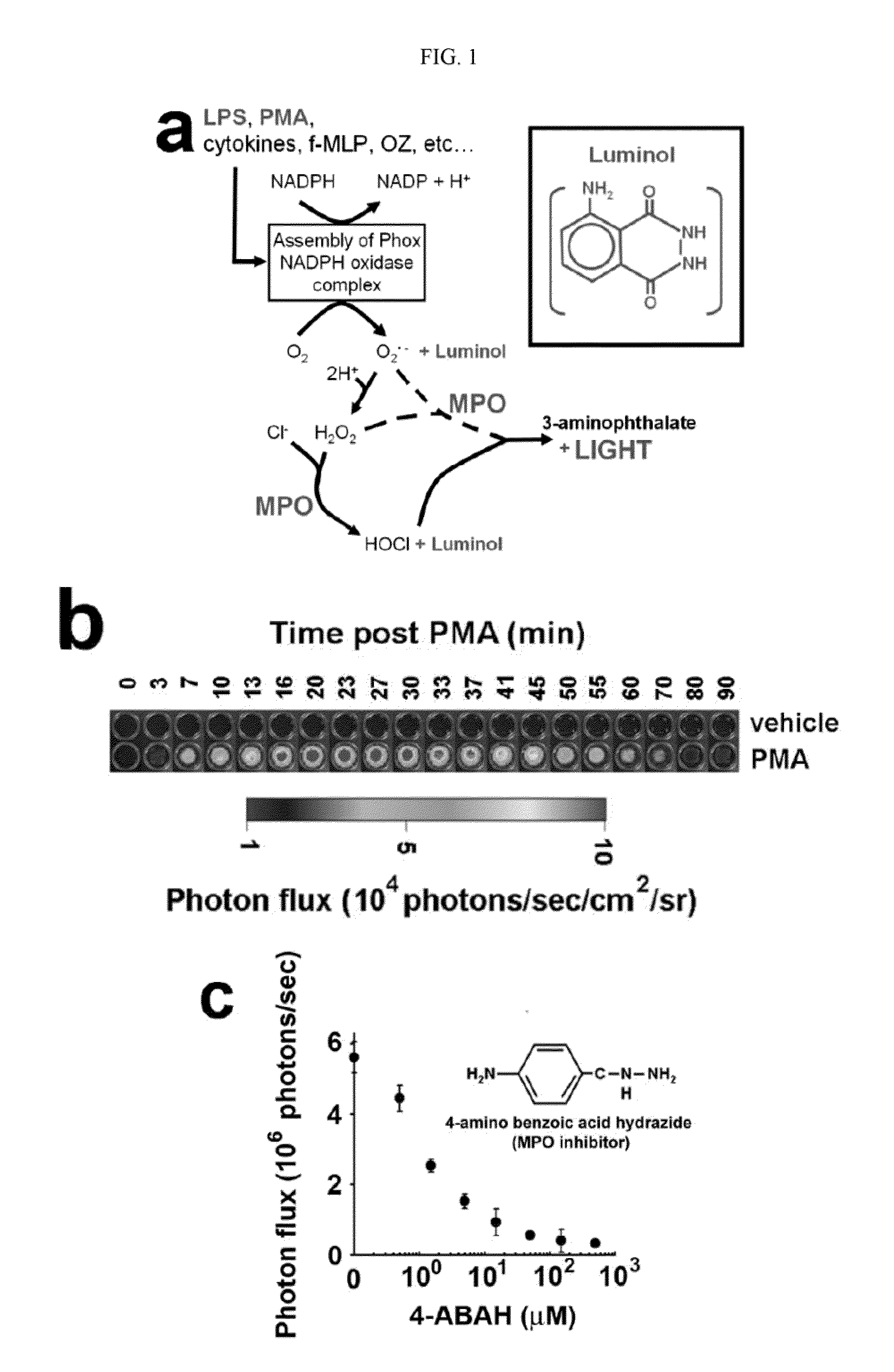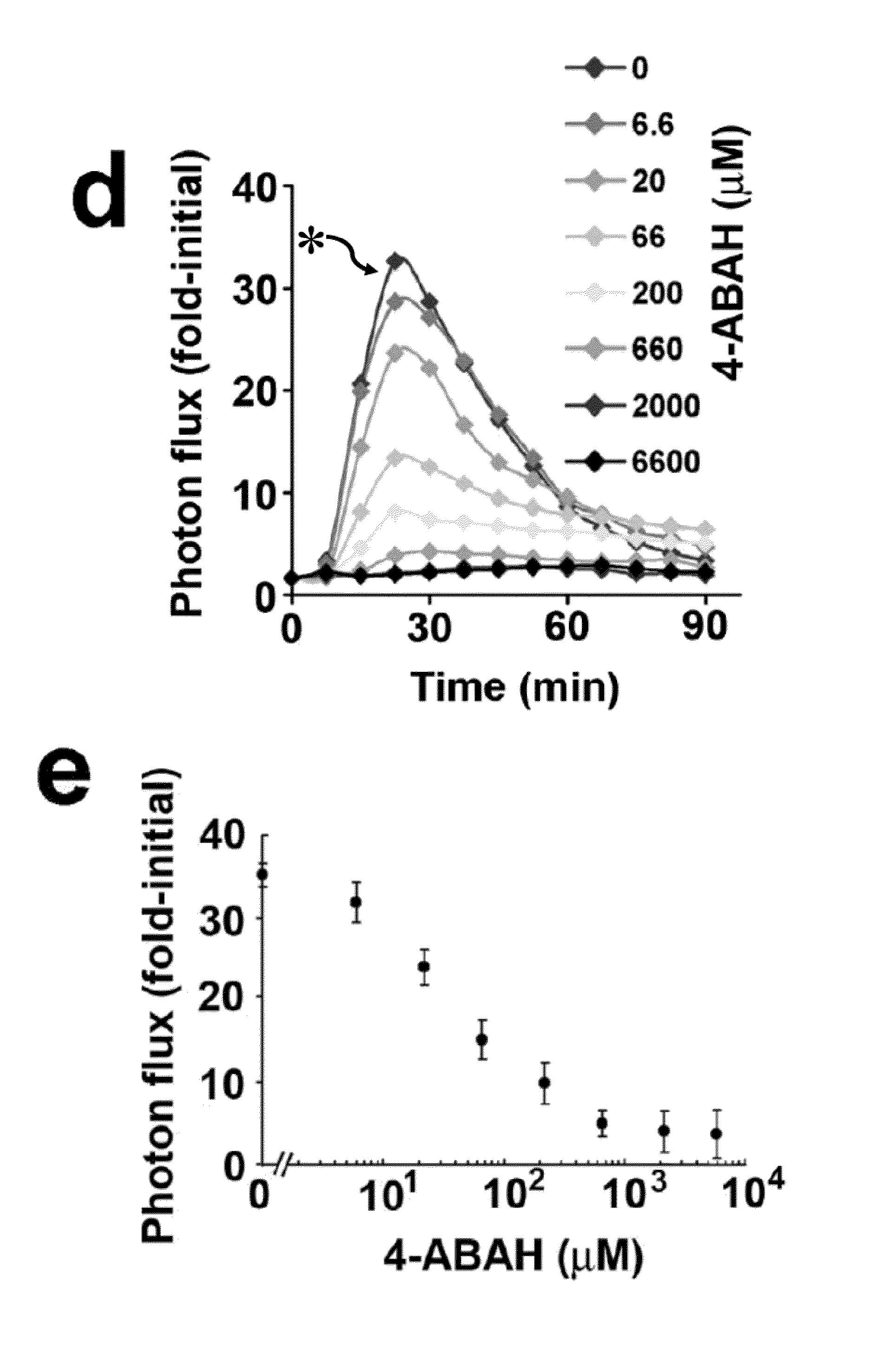Bioluminescence imaging of myeloperoxidase activity in vivo, methods, compositions and apparatuses therefor
a technology of bioluminescence imaging and myeloperoxidase, which is applied in the directions of diagnostic recording/measure, ultrasonic/sonic/infrasonic diagnostics, organic chemistry, etc., can solve the problems of limited studies and achieve the effect of improving tissue penetration and in vivo optical properties
- Summary
- Abstract
- Description
- Claims
- Application Information
AI Technical Summary
Benefits of technology
Problems solved by technology
Method used
Image
Examples
example 1
[0135]This Example illustrate the synthesis of Luminogenic-Optical Probe ILOG.
[0136]6-(N-(4-aminobutyl)-N-ethylamino)-2,3-dihydrophthalazine-1,4-dione (IL) dissolved in dimethylsulfoxide (0.5 ml) was treated with the succinimidylester of Oregon Green (1.1 equivalents) in the presence of trimethylamine (100 equivalents) at room temperature. Contents were stirred in an amber colored vial overnight. The product was purified on a Water's HPLC equipped with a dual wavelength detector, using an RP-C18 (Vydac) column, employing a mobile phase gradient of 2-90% acetonitrile with 0.1% TFA in water over 30 minutes. The fraction eluting at Rt=20.8 min was collected, lyophilized to obtain orange-red solid and identified via ESMS; Calcd for C35H28F2N4O8, 670.2; Found; 670.9 (FIG. 6, FIG. 7).
example 2
[0137]This Example illustrate the synthesis of Luminogenic-Optical Probe ILCY.
[0138]6-(N-(4-aminobutyl)-N-ethylamino)-2,3-dihydrophthalazine-1,4-dione (IL) dissolved in dimethylsulfoxide (0.5 ml) was treated with the succinimidylester of Cascade Yellow (1.1 equivalents) in the presence of trimethylamine (100 equivalents) at room temperature. Contents were stirred in an amber colored vial overnight. The product was purified on a Waters HPLC equipped with a dual wavelength detector, using an RP-C18 (Vydac) column, employing a mobile phase gradient of 10-90% acetonitrile with 0.1% TFA in water over 30 minutes. The fraction eluting at Rt=16 min was collected, lyophilized to obtain an orange-red solid and identified via ESMS; Calcd for C37H37N6O8S, 725.2; Found; 724.8. (FIG. 8, FIG. 9).
example 3
[0139]This Example illustrate the synthesis of Luminogenic-Optical Probe ILAF680.
[0140]6-(N-(4-aminobutyl)-N-ethylamino)-2,3-dihydrophthalazine-1,4-dione (IL) dissolved in dimethylsulfoxide (0.5 ml) was treated with succinimidylester of AlexaFluor 680 (1.1 equivalents) in the presence of trimethylamine (100 equivalents) at room temperature. Contents were stirred in an amber colored vial overnight. The product was purified on a Water's HPLC equipped with a dual wavelength detector, using an RP-C18 (Vydac) column, employing a mobile phase gradient of 10-70% acetonitrile with 0.1% TFA in water over 30 minutes. The fraction eluting at Rt=16.7 min was collected, lyophilized to obtain dark blue-purple solid and identified via ESMS; Calcd for C35H28F2N4O8, 670.2; Found; 670.9. (FIG. 10, FIG. 11)
PUM
| Property | Measurement | Unit |
|---|---|---|
| emission intensity maximum at a wavelength | aaaaa | aaaaa |
| wavelengths | aaaaa | aaaaa |
| wavelengths | aaaaa | aaaaa |
Abstract
Description
Claims
Application Information
 Login to View More
Login to View More - R&D
- Intellectual Property
- Life Sciences
- Materials
- Tech Scout
- Unparalleled Data Quality
- Higher Quality Content
- 60% Fewer Hallucinations
Browse by: Latest US Patents, China's latest patents, Technical Efficacy Thesaurus, Application Domain, Technology Topic, Popular Technical Reports.
© 2025 PatSnap. All rights reserved.Legal|Privacy policy|Modern Slavery Act Transparency Statement|Sitemap|About US| Contact US: help@patsnap.com



